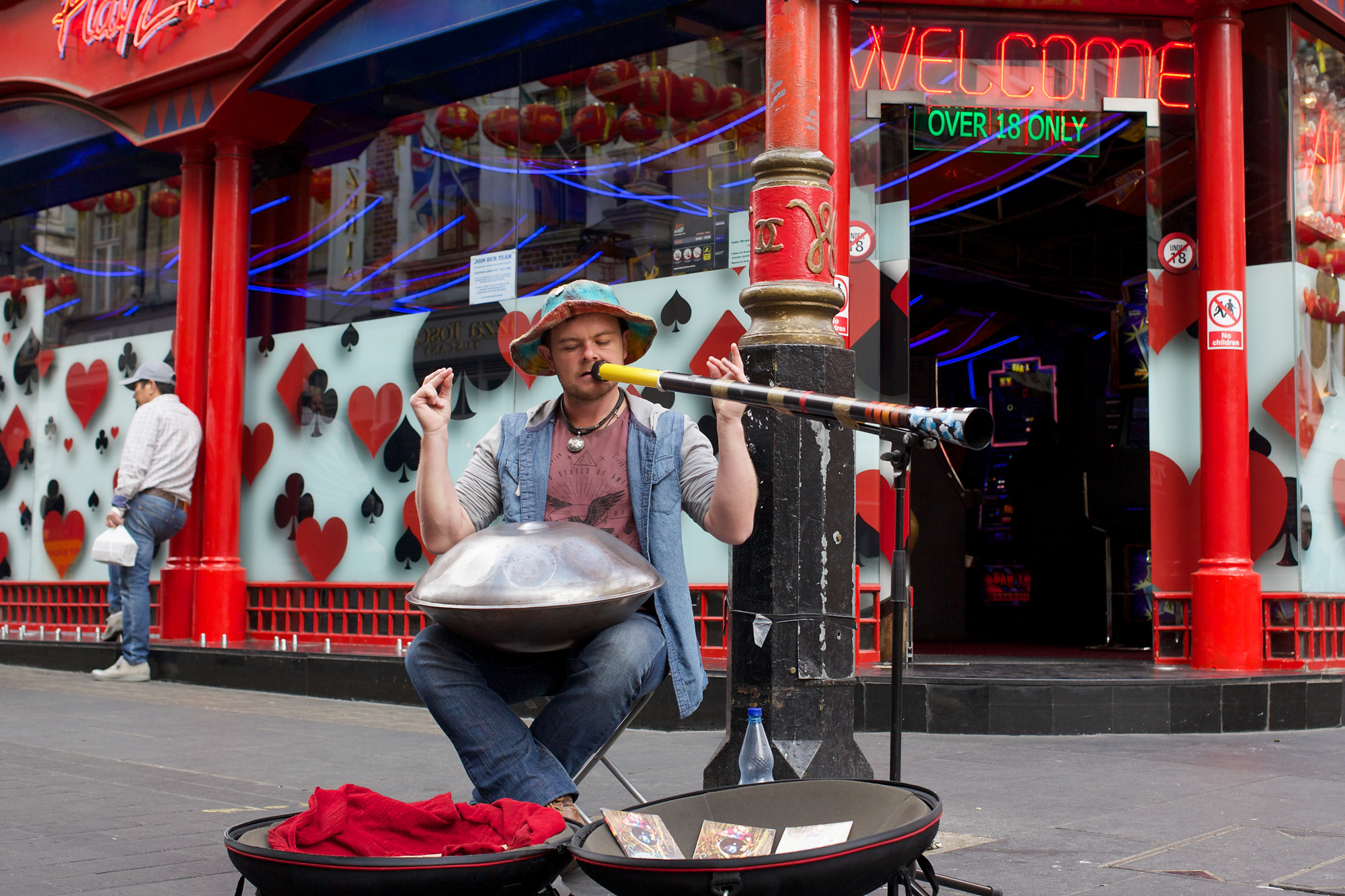“What are the chances?” That’s what I say to myself when I revisit a spot where I’ve taken a street photo that worked out well. Will it happen again? Will someone be there — in more or less the same place — enabling me to take another image, just as good as the first?
I’m constantly exploring new scenes and walking along streets I’ve never followed previously. I find that my confidence level changes according to the “lie of the land.” Let me explain what I mean.
In certain places I get the feeling I’m more likely to find reality arranging itself into a street photo than in other, less photo-friendly places. Sometimes it’s because there’s a confluence of streets: several streets meeting at a single junction. Or it could be because there’s a good vantage point, with perhaps an incline — up or down — opening a vista to another place beyond.
I particularly like places where people are obliged to jostle against each other or take exceptional steps to avoid collisions. Markets are great for finding busy spots where people are brought into close proximity. Not only do the inevitable interactions provide excellent photo opportunities, they also keep people sufficiently occupied to stop them noticing the camera.
Favoured Places
One of my favourite locations is in Central London outside a café where I frequently grab lunch. I always take a few shots before going in, then a few more when I emerge, refreshed and raring to go. However, you’d never guess it was the same spot, so I have to find alternative examples for this article. After all, my main purpose in pursuing “Same Place, Different Time” is to show an identifiable background, transformed by variations in the foreground subject.
I took the featured image (above) with the aim of illustrating places “Where Bad Things Have Happened.” It was close to this corner on Gerrard Street where, some years ago, one of the London Triad gangs clashed with a rival Snakehead gang, newly arrived from mainland China. Machetes were used to chop up customers in a downstairs dining area and one person died.
In the end, I wrote the article without using pictures from Chinatown, so this image became surplus to requirements. It’s still one of my favourites — and probably better than the illustrations I used. It carries it’s own alternative message of hope and despair.
A woman pauses in front of a casino, carrying a bag which says: “Friends are more important than money.” A man sits behind her, smoking a cigarette — despite, it must be said, the nasty-looking spikes which seem to be positioned to deter squatting punters who’ve lost their money. “Breathe deeply,” says the bag. Really, there’s a whole unspoken conversation happening here.
Returning to the Scene
A few weeks later I found myself in the same place, wondering if I could get another shot using the same colourful background. This time there was a street musician outside the casino, playing a steel bongo drum and occasionally blowing on what appeared to be a miniature didgeridoo. I don’t normally photograph street musicians, but I could scarcely avoid him if I wanted to use this particular background.

The two pictures make an interesting pair. In the second one (just above) there’s another man leaning against the pillars on the left, not unlike the seated figure in the featured image at the top. He, too, is turning his back on the open door of the casino with its big “Welcome” sign. Are both men gambling addicts who’re trying to shake the habit?
Meanwhile, the musician appears to be warning other gamblers by blowing on the didgeridoo — happily positioned in the middle of doorway. Yes, it’s a fanciful interpretation, but I don’t think it’s too farfetched.
Luring the Punters
The casino itself is covered in warning signs: “No Children,” “Over 18 Only” and so on. In a sense, these self-imposed warnings are actually adverts — “come on” signals for people who want to feel grown up and in charge of their own lives.
The messages are, of course, very misleading — as many punters discover to their cost. Fixed-odds betting terminals, such as those found in High Street casinos, can relieve punters of their entire year’s wages in a single session, as the charity GambleAware recently reported.
The idea that a gambler is ever “in charge” is a complete illusion because the casino always wins in the end. By contrast, a street musician is completely independent and this one seems to be in charge of his own destiny, at least for the time being.
So yes, as a street photographer you can return to the same location and get a second shot. It’s a gamble. But there’s no big money involved — and you can never lose your original stake.
